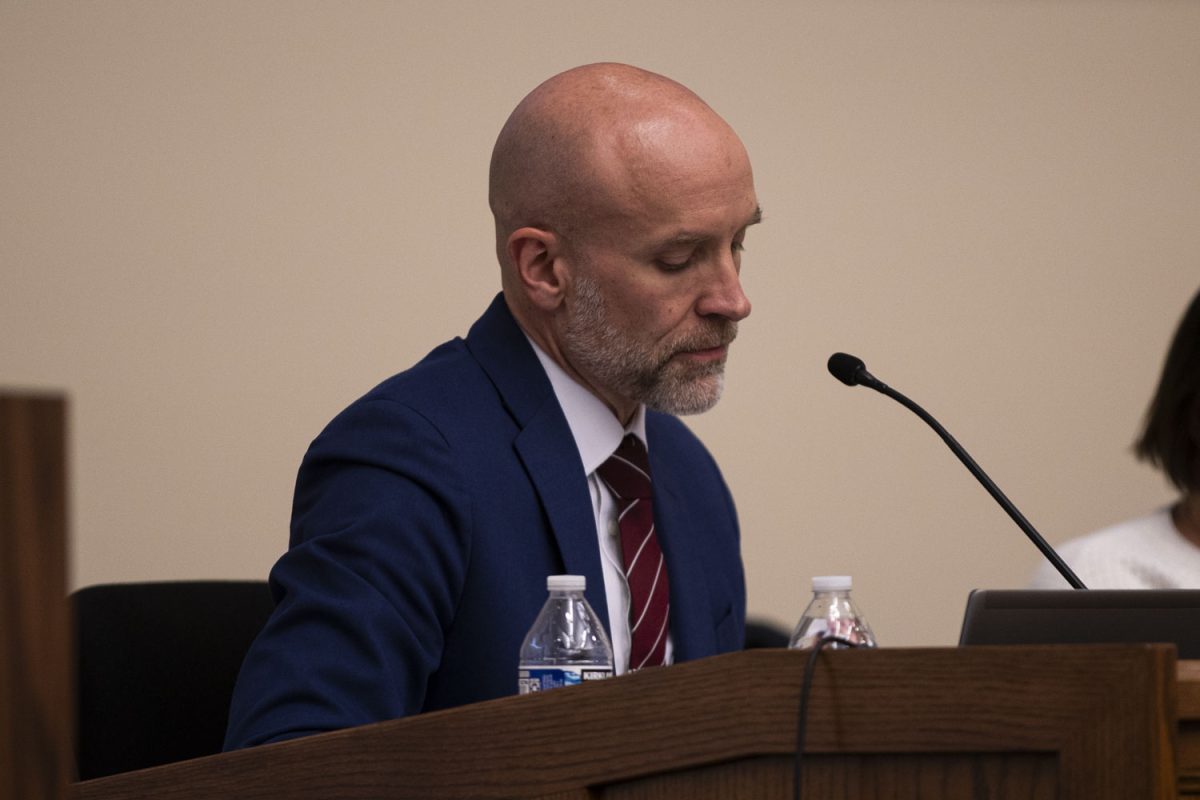By Elise Kerns
A new virtual-reality app modeled on a study on mice could help Alzheimer’s research, and University of Iowa professors and former researchers have been quick to recognize the app’s limits and applications.
Edmarie Guzman-Velez, a former UI doctoral student in clinical psychology and current postdoctoral fellow at Massachusetts General Hospital/Harvard, defined Alzheimer’s disease as a “progressive neurodegenerative disease that results in changes in cognition.”
“Usually, the first thing people start to notice is changes in their memory, but it eventually progresses to their motor and sensory cortexes, so the person has difficulty with movement and sensation,” she said.
Currently, all that is available for Alzheimer’s patients are drugs that can help slow down symptoms of the disease, not cure or prevent them, Guzman-Velez said.
Because of this, new technologies are continually explored to help the lives of those affected by the disease and to try to give patients “a few more years of independence and help them function normally, at least as much as possible,” she said.
One such technology is a new virtual reality app created by Samuel Sekandagu, a developer for virtual reality indie studio Overflow Games. The app was modeled after a study by Massachusetts Institute Technology’s Picower Institute for Learning and Memory.
Héctor De Jesús-Cortés, a former UI doctoral student of neuroscience and current postdoctoral fellow at the Picower Institute, was involved in the study that the app is based on.
The original study, Jesús-Cortés said, looked at mice that have a genetic mutation that predisposes them to have Alzheimer’s-like changes in the brain, resulting in a lower power in the frequency at which neurons fire.
“Neurons that are supposed to fire or communicate at a specific frequency were not communicating effectively,” he said. “The study thought to increase the frequency of gamma oscillation, the specific oscillations that were decreased.”
Andrew Pieper, a UI professor of psychiatry and neurology, said researchers used a technique called optogenetics to conduct the study.
In using optogenetics, the researchers “made these mice have light-responsive channels in their neuronal membranes so they could control when a neuron turns on or off by shining a light inside their brain,” Pieper said.
Using that technology, researchers activated neurons to fire at the specific gamma frequency, and this resulted in reduced pathology of Alzheimer’s disease, Jesús-Cortés said.
The application of the study is through the virtual-reality program because, he said, optogenetic cables can’t be inserted in humans. Like the study on mice, the program works by “stimulating the visual cortex of the brain by virtue of exposing the retina to lights at a certain frequency,” Pieper said.
“The idea is that with humans if you flash lights at a very specific frequency, you should be able to see a similar response in visual areas of the brain,” Guzman-Velez said.
While the app did reduce pathology of Alzheimer’s in specific areas of the brain, there are two major limitations to both it and the study itself. First, Pieper pointed out, the original study didn’t show behavior that would indicate if the reduced Alzheimer’s pathology also affects learning and memory deficits in the mice.
Additionally, the flickering lights of the virtual-reality app only affect the visual cortex, not such regions as the hippocampus, which affects learning and memory, Jesús-Cortés said.
“This is a very exciting topic, but the thing about virtual reality is that it needs more research at the basic level with mice to understand if it impacts behavior in other regions, like the hippocampus, to then be able to translate to humans,” Jesús-Cortés said. “If it works, it will be very exciting.”
While virtual reality may not be the most promising future for Alzheimer’s research, labs such as Pieper’s are making strides in other areas of neurodegeneration research, looking at new ways to treat neuropsychiatric diseases.
“It’s important to work on diseases that currently don’t have any effective treatments for patients,” Pieper said. “The opportunity to help people is enormous.”
Although Alzheimer’s poses especially difficult tasks for researchers, it’s important to not lose hope, Guzman-Velez said.
“Even though people often feel like they’re losing someone to the disease, there’s still a person there,” she said. “It’s important to continue to give support to the patient as well as everyone who loves that person.”







